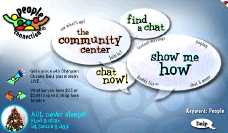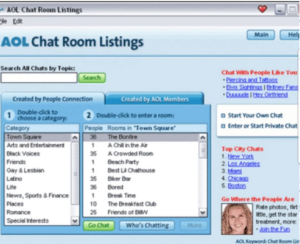alt.sex 9/18/1997
by H.B. Koplowitz
For my sixth column, I returned to the subject of sex and cyberspace, reviewing kinky newsgroups in an outpost on the internet called Usenet. For some reason I neglected to mention alt.sex.binaries, which was a place to trade dirty pictures, and a precursor to file-sharing networks.
Once upon a time there was a place on the Internet where people with unusual and sometimes unspeakable fetishes could find each other. Where personal ads were placed for sex with animals, or stuffed animals, and others indulged their secret obsessions with spanking, chloroform, even robots.
The pictures, messages, personal ads and stories were sometimes erotic and sometimes idiotic, offensive or even illegal, but nonetheless reflected the startling diversity of human sexual appetites. That place was “alt.sex,” an unmoderated cluster of Internet bulletin boards or “newsgroups” devoted to all manner of sexual fetishism.
Even more than other Usenet newsgroups, alt.sex has been obliterated by “spam,” junk email ads, mostly for adult Web sites. Today, little remains except the names of the discussion groups. Below are some examples of what alt.sex used to be like, and where content that used to be in alt.sex newsgroups can now be found on the Web:

Furry Friends (alt.sex.plushies): A plushie is a stuffed animal or toy, like a teddy bear. Alt.sex.plushies was for people desiring a more than Platonic relationship with a plushie. Some plushophiles have a thing for “fursuits,” which are full-body costumes such as those worn by sports team mascots or amusement park employees, and for “furries,” which are characters with aspects of both animals and humans, like Bugs Bunny. Today, “PeterCat’s Furry InfoPage” <www.tigerden.com/~infopage/furry> is the keeper of the alt.sex.furry FAQ [Frequently Asked Questions], with links to other plushie pages, from stuffed toy lovers to stuffed toy makers like FAO Schwarz.
Animal Lovers (alt.sex.bestiality and alt.sex.zoophilia): A bestialist wants sex with an animal, while a zoophile seeks a relationship, too, according to the FAQ in alt.sex.bestiality. However, personal ads for canines and other critters appeared in both newsgroups, as did practical advice on how to get physical with the species of your choice. Did some of the people in these newsgroups actually have sexual relations with animals? “You bet’cha!” says the FAQ. Today, links to Web sites, newsgroups, chat rooms and other bestial resources can be found at “Zoophile Server” <http://www.zoophile.org>, the original zoophile Web server.
Techno-Sexual (alt.sex.fetish.robots): A.S.F.R. was for people sexually attracted to robots and robot-like beings. “Techno-sexuals” are aroused by depictions of people behaving like or turning into robots, androids, mannequins, dolls, wind-up toys or hypnotized mechanical sex zombies, according to the newsgroup’s FAQ. The ASFR home page, which was created by “Robotdoll,” is not presently online. But Robotdoll’s FAQ has been preserved on “Robo-Lover’s Homepage” <members.aol.com/robolvr/index.htm>, along with pictures, stories, and links “dealing with the mechanical maidens and delectable dolls that is ASFR.”

Overlapping newsgroups included alt.sex.fetish.sleepy, which had stories and pictures about people overcome by hypnosis, chloroform and other mind control methods, and alt.sex.fetish.wet-and-messy, which was about erotic encounters with drenching rain, mud, quicksand, cream pies and other gooey stuff. On the Web today, “The Erotic Mind-Control Story Archive” <www.mcstories.com> has salacious tales broken into such categories as hypnosis, sudden growth of body parts, lactation, even Star Trek and X-Files characters. Wet and Messy Web sites include the “WAMSAT Project,” with links to sites with names like “Shokolada’s Mess,” “Muddy Melodrama” and “World Wide Wet Page.”
Spanking Good Time (alt.sex.spanking): Today’s fetish websites are far more stylish and better organized than alt.sex ever was. Still, they cannot replace the intimacy of a discussion group. Even if you aren’t into erotic spanking between consenting adults, to see what some alt.sex newsgroups used to be like, take a peek at soc.sexuality.spanking.
When alt.sex.spanking got overrun by spam, newsgroup regulars debated picking a “moderator” to screen messages for spams, pictures and other off-topic posts. They eventually agreed on a “robo-moderated” newsgroup, in which posts are electronically filtered by computer, with human moderators only seeing posts rejected by the ‘Bot. As a result, most of the messages in the soc.sexuality.spanking newsgroup are actually about spanking, at least most of the time.

Each summer the newsgroup holds a spanking short story contest, with the entries archived on the “S.S.S. Resource Page” <https://groups.google.com/g/soc.sexuality.spanking>. But some of the most compelling stories are the true ones posted in the newsgroup by “delurkers” revealing their spanking fetish, and their relief at finding kindred souls.
What newsgroups have that Web pages don’t is a sense of community. And as stated in the new soc.sexuality.spanking charter, “Regaining the feelings of community and support was the reason for the formation of s.s.s, and in s.s.s., the tradition of welcoming newcomers with open arms continues.”








